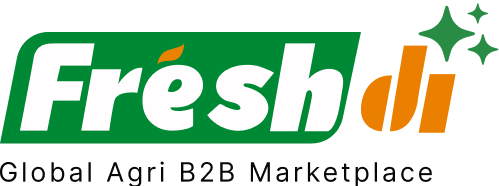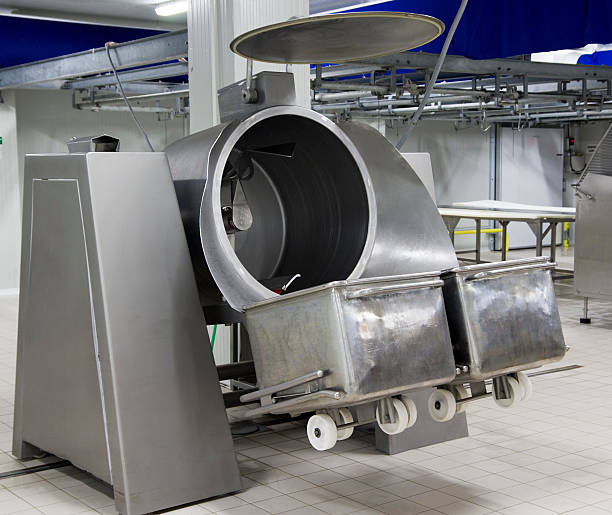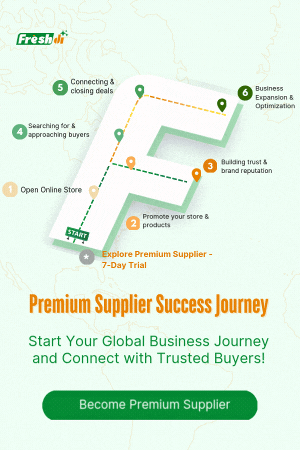Introduction – Delving into South Korea’s Reputation for Quality Tea
When you think of premium tea, South Korea might not be the first country that pops into your mind—but it should be. This East Asian gem is quietly becoming a powerhouse in the global tea market, thanks to its unique combination of rich cultural heritage, ideal growing conditions, and an industry-wide commitment to quality.
Let’s start with the basics. South Korea’s tea-producing regions—especially Jeju Island, Boseong County, and Hadong—are blessed with all the right natural ingredients. Jeju’s volcanic soil adds a mineral-rich depth to tea leaves, while the stable, subtropical climate and consistent rainfall in places like Boseong and Hadong create the perfect storm for lush, flavorful growth.
But it’s not just about natural advantages. South Korea’s tea history goes back over a thousand years. Farmers here don’t just grow tea—they live it. Their traditional farming methods, like cultivating tea on mountainous terraces to preserve humidity and soil quality, show a deep respect for nature and craft.
Add to that an 8.78% market growth in 2024, worth 1.58 trillion won, and you’ll see why South Korea is turning heads in the global tea scene. Brands like Osulloc are even partnering with global restaurants to bring Korean tea to the world stage.
Defining & Verifying Tea Excellence in South Korea
So, what makes South Korean tea stand out?
Quality Standards and Certifications
South Korea doesn’t play when it comes to quality. The Korean Agency for Technology and Standards (KATS) ensures that tea products meet both local and global benchmarks. They’re part of international standard organizations like ISO and IEC, so trust us—if it’s certified by KATS, it’s legit.
Let’s not forget the Korea Testing & Research Institute (KTR). They provide testing services and certifications with international credibility, including ISO/IEC 17025 and ISO/IEC 17020. These stamps of approval guarantee that your tea is not only flavorful but also safe and ethically produced.
On platforms like Freshdi, buyers can filter RFQs (Request for Quotations) by required certifications, helping them ensure they’re sourcing only top-tier, verified products.
Regional Profiles and Their Impact on Quality
Different regions, different flavors. Here’s how geography shapes your cup:
- Jeju Island: Think clean, slightly sweet flavors. The volcanic soil adds a subtle mineral richness that elevates the tea’s character.
- Boseong County: Known as the “Green Tea Capital” of Korea, Boseong offers earthy, grassy notes with a smooth finish, thanks to its temperate climate and terraced fields.
- Hadong: With over 1,200 years of tea-growing history, Hadong teas are complex and bold, often with roasted or nutty undertones.
These differences make sourcing from Korea an exciting journey for any buyer looking to diversify their offerings.
Top 5 Verified Tea Suppliers in South Korea – Leaders in Quality
We scoured Freshdi’s verified supplier database and community feedback to bring you the top-performing tea exporters in Q3 of 2025. Here’s who made the cut:
1. Real White
Real White has carved out a reputation for premium white and green teas cultivated using eco-friendly methods. Their consistent export success and certifications in organic farming make them a reliable pick for buyers seeking traceable, health-conscious options.
2. HEDLEY’S TEA (PVT) LTD
A global player with a strong South Korean presence, HEDLEY’S TEA specializes in black and oolong varieties. Their teas are favored for their bold flavors and international certifications, including fair trade and HACCP.
3. Damccot
Known for innovation, Damccot produces unique blends like water-free squeezed ginger tea. Their products have gained traction among health-conscious consumers, making them a great choice for wellness-focused markets.
4. COLBRAN COFFEELANDS LTD.
While best known for coffee, COLBRAN has recently diversified into tea with an emphasis on sustainable sourcing. Their teas are often certified organic and Rainforest Alliance, offering a perfect blend of ethics and quality.
5. Kang Eunho
This boutique supplier focuses on artisan green teas from Hadong and Boseong. Kang Eunho’s attention to detail and traditional processing techniques have earned rave reviews from international buyers on Freshdi.
Dynamic Ranking Note
It’s worth noting that platforms like Freshdi regularly update their supplier rankings based on real-time performance, RFQ activity, and buyer feedback. Keep an eye out for seasonal “Suppliers of the Month” or “Quarterly Stars” to discover emerging leaders.
Market Navigation – Trends in Quality Demand & Global Consumer Preferences
Current Demand for Premium Teas
Let’s talk numbers. The South Korean tea market is projected to grow from USD 490 million in 2024 to USD 730 million by 2033. That’s a compound annual growth rate (CAGR) of 4.1%. This isn’t just a passing trend—it’s a seismic shift in consumer behavior.
More people are ditching sugary sodas and caffeinated overloads for green teas, herbal infusions, and functional blends. Health is the new luxury, and tea is leading the charge.
Ready-to-Drink (RTD) Boom
Busy lifestyle? Say no more. The RTD segment is exploding, expected to jump from USD 1.39 billion in 2024 to over USD 2.24 billion by 2030. Brands are innovating like crazy—think cold-brew green teas, sparkling herbal blends, and even kombucha hybrids.
Global Taste Shifts & Cultural Appeal
The Korean Wave isn’t just about K-pop and K-dramas. It’s also driving interest in traditional Korean tea culture. As more global consumers get curious about Korean wellness rituals, authentic tea experiences are becoming a hot commodity.
Buyers are now looking for:
- Roasted and earthy flavor profiles.
- Organic and clean-label teas.
- Teas from specific regions like Jeju or Hadong.
Traceability and Ethical Sourcing
In today’s transparent world, buyers want to know everything—from where the leaves were plucked to how the workers were treated. Certifications like Organic, Fair Trade, and Rainforest Alliance are no longer optional; they’re expected.
South Korean producers are stepping up. Many are integrating blockchain for traceability, improving packaging transparency, and using QR codes to tell the story behind every cup.
On Freshdi, you can find detailed supplier profiles, complete with certification badges, product origin info, and even lab test results. This kind of data-driven sourcing is a game-changer.
Conclusion – Strategic Sourcing for Quality
South Korea isn’t just producing tea—it’s redefining the tea experience. With its unbeatable combo of climate, tradition, and innovation, the country offers a premium sourcing opportunity for any serious tea buyer.
To recap, here’s how to make the right sourcing decision:
Buyer’s Checklist: Sourcing South Korean Tea Like a Pro
- ✅ Choose suppliers with KATS or KTR certifications.
- ✅ Verify regional origin—Jeju, Boseong, or Hadong are gold standards.
- ✅ Request traceability documentation and ethical certifications.
- ✅ Tap into Freshdi’s RFQ system to specify your exact quality needs.
- ✅ Look out for dynamic rankings to discover high-performing suppliers.
Future Outlook
The stars are aligning for South Korean tea. As the world becomes more health-conscious and culturally curious, the demand for authentic, high-quality teas will only grow. Whether you’re a wholesaler, importer, or boutique tea house, tapping into Korea’s tea heritage now could give you a competitive edge down the line.
And with platforms like Freshdi offering real-time insights, verified suppliers, and quality tracking, sourcing smart has never been easier.
FAQs
1. What makes South Korean tea different from Chinese or Japanese tea?
While Chinese teas are known for fermentation and Japanese for steamed processing, South Korean teas often strike a balance—offering bold, roasted flavors with smooth finishes. The volcanic soil of Jeju and traditional processing in Hadong give Korean teas unique character.
2. Are South Korean teas organic?
Many are, especially from premium regions like Jeju and Boseong. Look for certifications like USDA Organic or Korean Organic on Freshdi supplier profiles.
3. How can I verify the quality of a tea supplier from South Korea?
Use trusted B2B platforms like Freshdi that offer supplier verification, certification records, and buyer feedback. You can also request lab reports and traceability documentation.
4. What types of teas are most popular from South Korea?
Green tea leads the pack, followed by herbal and functional teas like ginseng or ginger blends. RTD teas are also booming due to their convenience.
5. Can I request custom blends from South Korean suppliers?
Absolutely. Many suppliers, particularly those verified on Freshdi, offer private label services and custom blending to suit your market needs.
References
- Wikipedia – O’Sulloc Tea
- ICOMOS Tea Landscapes
- Donga News
- PR Newswire – Osulloc Partnership
- Tridge News – Green Tea Innovation
- KATS – Wikipedia
- KTR – Wikipedia
- Alveus.eu – Korean Teas
- Market Report – Industry Today
- Market Insight Blog
- StrategyH RTD Tea Report
- IISD Global Tea Report
- Ipsos South Korea 2025
- Tea & Coffee Net
- MDPI – Consumer Preferences
- Freshdi – Supplier Listings





